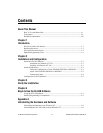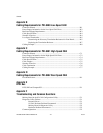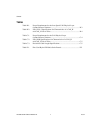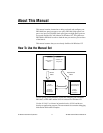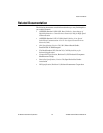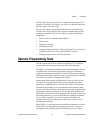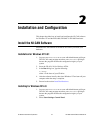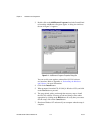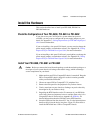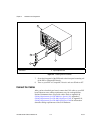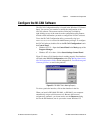
Chapter 1 Introduction
PXI-846x and NI-CAN for Windows NT 1-2 ni.com
The PXI-8461 physical layer fully conforms to the ISO 11898 physical
layer specification for CAN and is optically isolated to 500 V. The
PXI-8460 physical layer conforms to the ISO 11519-2 physical layer
specification for CAN and is also optically isolated to 500 V. CAN
interfacing is accomplished using the Intel 82527 CAN controller chip.
The PXI-8461 supports a wide variety of transfer rates up to 1 Mb/s. The
PXI-8460 supports rates up to 125 kb/s. The PXI-8462 is a dual-speed
board, with port one configured as a high-speed port (ISO 11898), and port
two configured as a low-speed port (ISO 11519-2). The CAN physical
layer on the PXI-8460, PXI-8461, and PXI-8462 can be powered either
internally (from the board) or externally (from the bus cable power). The
power source for the CAN physical layer for each port is configured with
a jumper.
PXI-8461 boards are available with two physical connector types:
• DB-9 D-Sub
• Combicon-style pluggable screw terminals
PXI-8460 and PXI-8462 boards are available with DB-9 D-Sub connectors.
The PXI-846x series boards use the Real-Time System Integration (RTSI)
bus to solve the problem of synchronizing several functions across multiple
boards to a common trigger or timing event. The RTSI bus is implemented
by using the National Instruments PXI trigger bus to route timing and
trigger signals between the CAN hardware and National Instruments DAQ,
IMAQ, or additional CAN hardware. Although the PXI-846x series board
with RTSI bus is available in a PXI chassis, there are important issues
to consider when using it in a CompactPCI chassis. Please refer to
Appendix E, RTSI Bus, for detailed information about the PXI-846x series
RTSI interface.
The PXI-8460, PXI-8461 and PXI-8462 boards use the Intel 386EX
embedded processor to implement time-critical features provided by the
NI-CAN software. The PXI-8460, PXI-8461 and PXI-8462 communicate
with the NI-CAN driver through on-board shared memory and an interrupt.
NI-CAN Software Overview
The NI-CAN software includes a native, 32-bit multitasking Windows NT
kernel driver. The NI-CAN software is fully integrated into the
Windows NT operating system. You can configure it through the
Windows NT Control Panel and uninstall it through the Add/Remove
Programs applet of the Control Panel.



